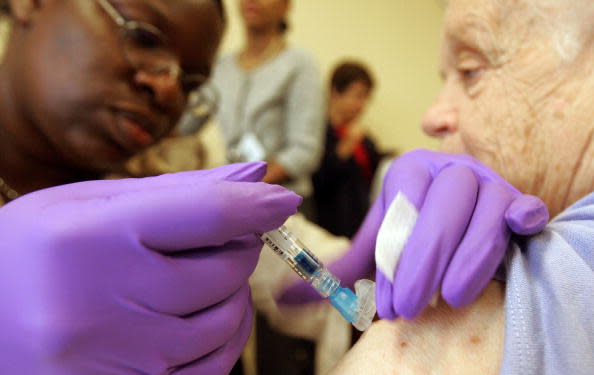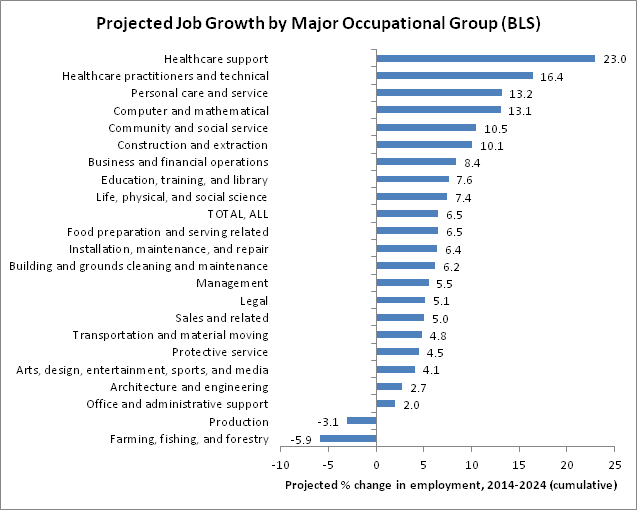Here’s why the black unemployment rate hit a 16 ½-year low

The May jobs report confirms the labor market is strengthening, with the US unemployment rate hitting a 16-year low. Though wage gains were meager, the employment picture overall is looking healthy.
But how about when you break down the 4.3% unemployment rate by race? Two groups fall below the overall level — with the white unemployment rate at 3.7% and the Asian unemployment rate at 3.5%. Meanwhile, the Hispanic unemployment rate is 5.2% and the black unemployment rate is 7.5% — its lowest level since December 2000.
The obvious reason for its decline is the overall strengthening of the labor market, said Heidi Shierholz, senior economist and director of policy at The Economic Policy Institute.
It’s not an aberration that the unemployment rate for blacks is significantly higher, since it’s consistently trended around double that of the overall unemployment rate. However, it’s worth noting the year-over-year change is 0.7% (down to 7.5% from 8.2% last May). The overall unemployment rate has decreased 0.4% during that same period.
There are a couple of explanations for the increase in employment among African Americans. For one thing, data show that African Americans benefit more when the economy improves. Meanwhile, African Americans are least likely to be in disappearing industries (e.g. manufacturing, farming, forestry and fishing).
“We’re moving from terrible times to good”
“The black unemployment rate is twice as high in good times and in bad times, but we’re moving from terrible times to good. At least as far as the number of jobs and the unemployment rate are concerned, we’re heading in a very good direction. This means we see the overall unemployment rate and the black unemployment rate come down in lockstep,” Shierholz said.

In a report entitled “The Impact of Full Employment on African American Employment and Wages,” Valerie Wilson, the director of the Economic Policy Institute’s Program on Race, Ethnicity and the Economy (PREE), points out that the black unemployment rate is more volatile with respect to labor market changes than the white rate.
“Between 1979 and 2014, the average annual black unemployment rate changed by 1.7% for every 1% in the national unemployment rate, compared to a change of 0.91% for whites,” Wilson writes.
“The stakes of effective macroeconomic stabilization policy are extraordinarily high for African American employment. African American families suffer disproportionately from labor market downturns and reap disproportionate gains during recoveries.”
Shierholz adds: “Empirically, the effect is stronger the further down the wage distribution you go. Labor market conditions matter the most for low-wage workers, and to the extent that you have African American workers disproportionately concentrated at the lower end.”
In other words, despite the correlation between black employment and the overall employment picture, blacks benefit more from a tighter labor market, which is what the US is experiencing now.
Who has the most economic anxiety?
Another key factor in understanding the differences in the employment picture among different racial groups is the idea of economic anxiety, explains Jed Kolko, chief economist at Indeed.
Prior to the presidential election, Kolko wrote a personal blog post about the demographic differences when it comes to job security.
“African Americans are the least likely to be in shrinking occupations,” he said.
To be sure, Hispanics and blacks are doing worse economically, as measured by current unemployment, income, wealth, or the impact of the Great Recession. But they aren’t the groups who are most anxious about the economy. That’s because they’re in jobs that aren’t at a high risk of disappearing, according to Kolko. Healthcare is the ultimate high-growth industry because caregivers and physical therapist aides can’t be sent overseas or easily automated.
In 2015, blacks made up 12% of all employed workers, but accounted for one-quarter or more of those in several specific occupations, including nursing, psychiatric, and home health aides (38%); security guards and gaming surveillance officers (29%), licensed practical and licensed vocational nurses (29%), and bus drivers (28%), according to BLS analysis.
Meanwhile, white men, older adults, and the less educated, are more likely than any other groups to be working in occupations that are most likely to shrink — like farming, fishing, forestry, production, administrative support, architecture and engineering. Service-related jobs, like bookkeepers and accountants, fast food cooks, and mail carriers, are particularly at risk of disappearing, according to Kolko.

That’s not to say that African Americans are doing better than white men simply because they’re working in professions that aren’t as likely to vanish. African Americans are still behind when it comes to income, wealth, and having a job at all, he said.
An improving labor outlook for all workers
Both Kolko and Shierholz say that a tightening labor market has benefited all workers, including African Americans, and increased the likelihood they’ll find jobs.
“We’re in a job market where job seekers have more of the power. Employers might turn some of their essential skill requirements into ‘nice to haves’ instead. This opens up opportunities to more people,” Kolko said.
“Workers across the board are benefiting from a tight labor market,” said Shierholz. “Employers know they have to offer decent pay and compensation packages in order to get and keep the workers they need, shifting bargaining power in a real fundamental sense toward workers.”
That’s not to say that African Americans are doing better than white men simply because they’re working in professions that aren’t as likely to vanish. African Americans are still behind when it comes to income, wealth, and having a job at all, he said.
An improving labor outlook for all workers
Both Kolko and Shierholz say that a tightening labor market has benefited all workers, including African Americans, and increased the likelihood they’ll find jobs.
“We’re in a job market where job seekers have more of the power. Employers might turn some of their essential skill requirements into ‘nice to haves’ instead. This opens up opportunities to more people,” Kolko said.
“Workers across the board are benefiting from a tight labor market,” said Shierholz. “Employers know they have to offer decent pay and compensation packages in order to get and keep the workers they need, shifting bargaining power in a real fundamental sense toward workers.”
Melody Hahm is a writer at Yahoo Finance, covering entrepreneurship, technology and real estate. Follow her on Twitter @melodyhahm.
Read more:

